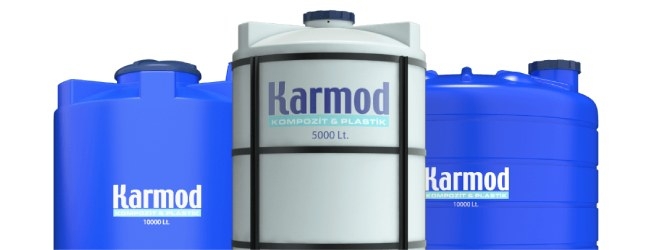
Water tanks are widely used by many people and brands today. Especially in countries in the African continent, these tanks are used to store and preserve water. In our country, they are used for purposes like storing and transporting raw materials produced in industries and factories.
When we look at their general purposes, tanks are vehicles that allow the storage of a liquid, food, or chemical substance and its release for use when needed. Urban legends often revolve around the most cost-effective option, which is the polyethylene water tank. Furthermore, tanks are manufactured using three different raw materials: polyethylene, polyester, and stainless steel. Since each material has its unique characteristics, the features it adds to the tank also vary. Therefore, we can categorize the characteristics of tanks into three groups. However, despite these three categories, there are some common features shared by all tanks. Common Features of These Tanks:
- These tanks can be produced in any color according to customer preferences.
- All tanks are UV-stabilized, meaning they do not allow high levels of ultraviolet rays to penetrate.
- Custom project designs are possible.
- All tanks are covered by a two-year guarantee against manufacturing defects.
- During production, recycled materials or any chemicals or coloring agents that could harm the tank are not used.
- All tanks undergo specific durability tests, ensuring they are leak-proof and have a long lifespan. This is crucial for preserving rainwater.
- Tank sizes range from 50 liters to 100.000 liters.
- There is a tank model suitable for every need.
After explaining the general characteristics of these tanks, there are some myths circulating in the market regarding these tanks. To debunk these myths and prove they are merely urban legends, we have prepared this article. Here are five myths related to these tanks:
Are Polyethylene Water Tanks Durable?
Polyethylene tanks are often considered less durable by users due to their lightweight nature. However, this lightweight quality is entirely due to the material, polyethylene, and should not raise concerns about durability. Additionally, all tanks undergo specific durability tests after production. Furthermore, all tanks come with a two-year guarantee against manufacturing defects. Therefore, there is no need to worry about their durability. Their operating temperature range is also up to +50 degrees Celsius. It's important to note that the intended use of the tank plays a significant role in this context. These tanks belong to the most economical price category. Moreover, they offer extensive design options.
Can Water Tanks Store Food and Drinkable Liquids?
Another myth regarding polyethylene tanks is about their suitability for storing food. This misconception arises from the common perception of polyethylene as "plastic," which often causes hesitation among people. However, international food organizations have approved polyethylene for food contact. These tanks are produced differently from other tanks, in a monoblock form, which means they are manufactured as a single piece. As a result, the surface of these tanks is smooth, allowing for easy cleaning. The tank lids are also made from polyethylene material and are screwable. Additionally, the material used for the sleeve part is brass. You can attach any faucet you desire to the sleeve. Most faucets available in the market are compatible with these tanks.
How Are Stainless Steel Water Tanks Manufactured?
Stainless steel tanks are known for their robustness and often raise questions about whether they truly do not rust. These tanks belong to the most durable category. They are produced by mixing steel and chrome-nickel to obtain AISI 304 steel, which is then welded together using argon gas according to the design plan. This results in tanks that do not rust and are resistant to corrosion. Due to the durability of the material, these tanks do not allow light to enter, preventing the formation of algae inside. They are indeed rust-proof and corrosion-resistant. These tanks have the highest working temperature among all tanks, with an operating temperature of up to +80 degrees Celsius, which is close to the boiling point. After storing such hot content, it is recommended not to touch the tank with your hand.
Are Polyester Water Tanks Durable?
Polyester tanks also face misconceptions about their durability. These tanks have the highest chemical resistance among all tanks. They are produced using isophthalic and epoxy-based vinyl ester resin when chemical resistance is required. These tanks are usually made from parts composed of a combination of polyester resin and fiberglass, bonded together with special adhesives. They are the most cost-effective tanks for transportation. They can be assembled on-site due to their production method. Large-sized tanks can be produced with custom project designs. The operating temperature of polyester tanks is up to +60 degrees Celsius.
How Can You Find the Right Tank for You?
Finding the right tank is often considered a myth. Some users suggest using multiple tanks to find the right one, but this is entirely incorrect. If you share your intended use and the characteristics of the content you want to store with us, we can help you select the tank that suits you best. You will only need to choose the size of your tank. Since there is a guarantee in production, you won't have to worry about its durability. With our extensive experience in industry and state-of-the-art manufacturing facilities, these tanks are highly durable and long-lasting.
If you are interested in these tanks, which are not only competitively priced but also offer many advantages, you can contact our customer representatives to find the tanks that suit you and get answers to any questions you may have.


 EN
EN
 DE
DE
 FR
FR
 IT
IT
 ES
ES
 PT
PT
 RU
RU
 AR
AR
 BG
BG
 SR
SR
 GR
GR
 SQ
SQ
 RO
RO
 PL
PL
 HU
HU
 CZ
CZ
 HR
HR
 AZ
AZ
 GE
GE
 AM
AM
 IL
IL